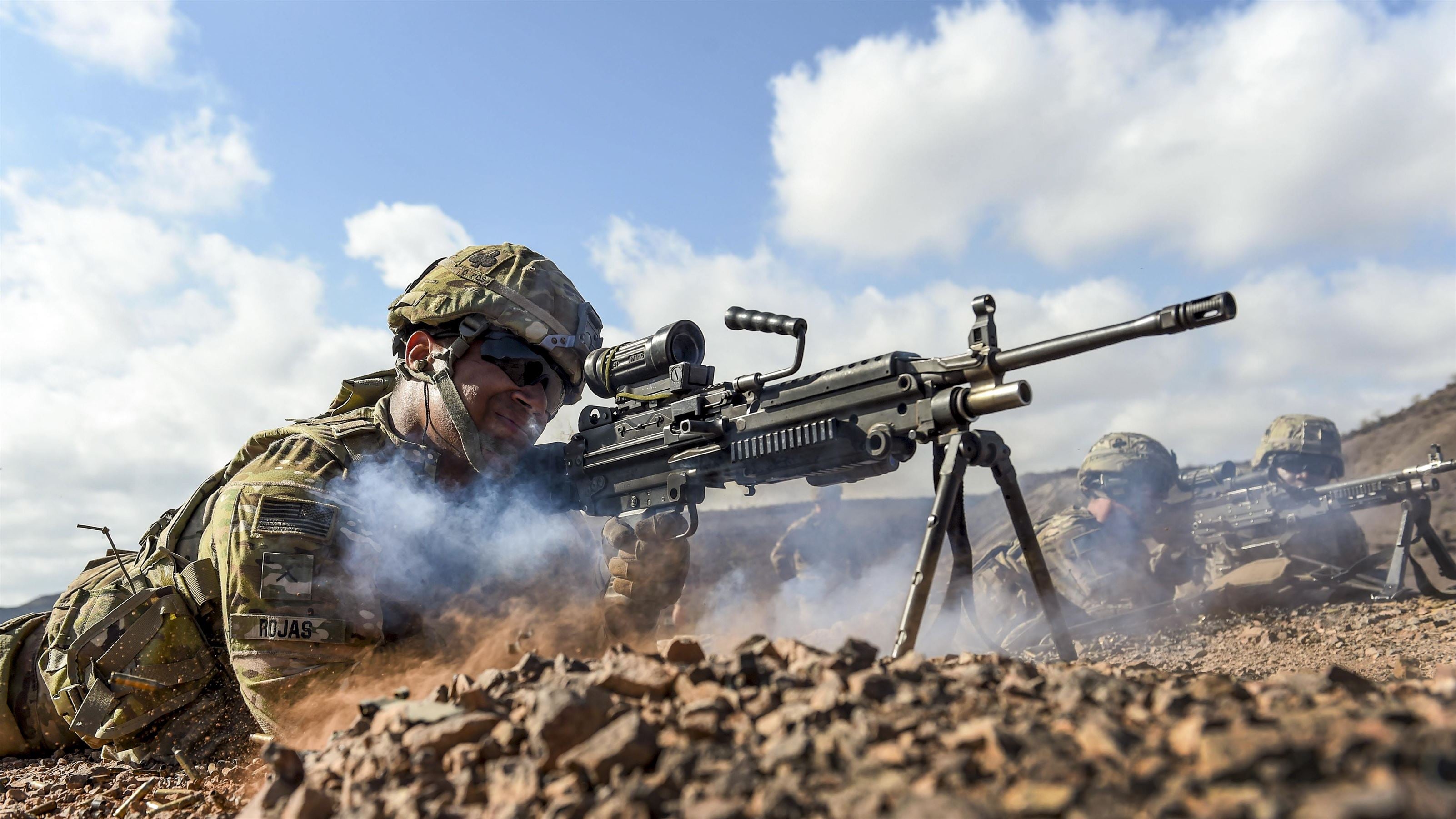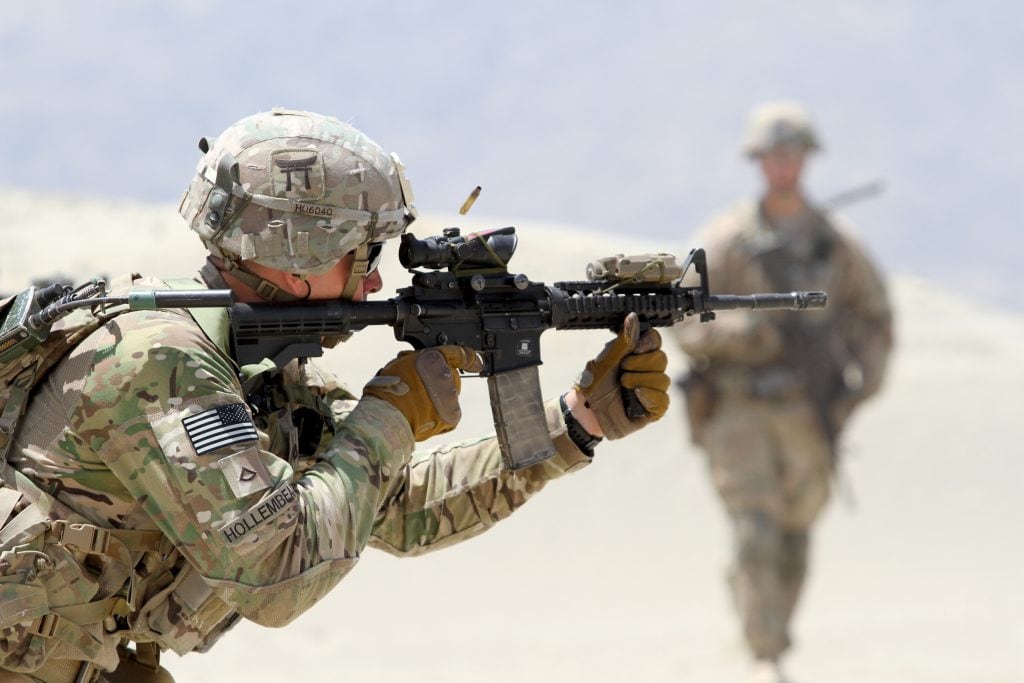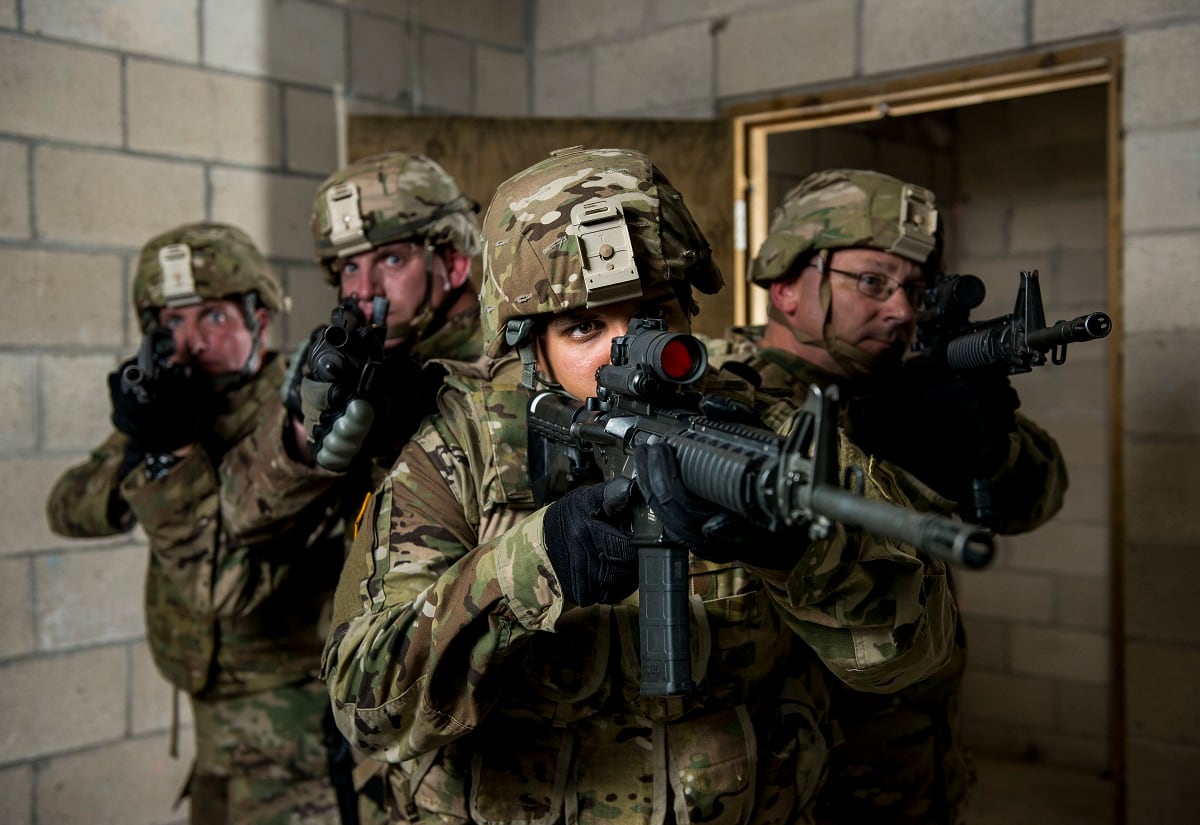HUNTSVILLE, Alabama — The Army has had no fewer than three major pushes in the past 15 years to upgrade soldier technology to state-of-the-art, but senior leaders are hoping that with the advent of Army Futures Command, this time they’ll finally get it right.
The Army needs new weapons, new night-vision and new protective systems to keep any edge over the competition, the head of Training and Doctrine Command said Wednesday at AUSA’s Global Force Symposium.
“U.S. close-combat soldiers, and Marines, in our squads and platoons do not over-match our enemies,” Gen. Stephen Townsend said. “Our adversaries have access to weapons and tech that can enable them to close the gap with our forces.”

The soldier lethality cross-functional team under AFC will realign the Army’s efforts on programs like a new squad automatic weapon, a new carbine and night-vision goggles.
“Minus this new pistol that’s coming out, we haven’t done much for these guys here,” Townsend said of the roughly 100,000 infantry, armor, forward observer, engineer and medical soldiers who engage in close combat.
Instead, the Army has put energy into training to build better soldiers, he said.
“I would argue that other than night vision we’ve really mostly relied on physical fitness, superior training and combined arms to prevail in the close fight for the last number of years,” he added. “I would say in the final 100 yards, that edge is inadequate.”
To begin, XVIII Airborne Corps soldiers are tasked with giving early feedback on new soldier systems. On the other end, Sergeant Major of the Army Dan Dailey said, the Army will have to be judicious about how they’re issued.
He used the Advanced Combat Optical Gunsight as an example — once that technology hit combat arms troops, everyone in the Army wanted one. But on deployment to Iraq, he said, he saw them sitting in corners on forward operating bases, because not every soldier actually needed one.
While night vision, body armor and even the carbine have gotten incremental updates, the challenge under the new command will be to stay on task.
RELATED

“There’s been at least three efforts that look very much like today’s soldier lethality CFT,” he said. “When you flip through some of their reports, they use language just like we’re using today, that our soldiers small units don’t have decisive over-match in the close fight.”
“We’ve got to drop the weight on our equipment,” he said. “Just because we give it to you doesn’t mean you have to wear it all on the battlefield. “
Meghann Myers is the Pentagon bureau chief at Military Times. She covers operations, policy, personnel, leadership and other issues affecting service members.





